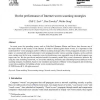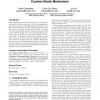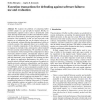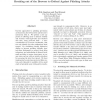33 search results - page 2 / 7 » Defending against Internet worms: a signature-based approach |
PE
2006
Springer
13 years 5 months ago
2006
Springer
In recent years, fast spreading worms, such as Code Red, Slammer, Blaster and Sasser, have become one of the major threats to the security of the Internet. In order to defend agai...
INFOCOM
2003
IEEE
13 years 11 months ago
2003
IEEE
— Active worms spread in an automated fashion and can flood the Internet in a very short time. Modeling the spread of active worms can help us understand how active worms spread...
WORM
2004
13 years 7 months ago
2004
Self-propagating computer worms have been terrorizing the Internet for the last several years. With the increasing density, inter-connectivity and bandwidth of the Internet combin...
IJISEC
2006
13 years 5 months ago
2006
We examine the problem of containing buffer overflow attacks in a safe and efficient manner. Briefly, we automatically augment source code to dynamically catch stack and heap-based...
CEAS
2008
Springer
13 years 7 months ago
2008
Springer
Current approaches to phishing prevention are focused on the web browser and the user's interaction with it. We present a new approach to allowing users to interact reliably ...




